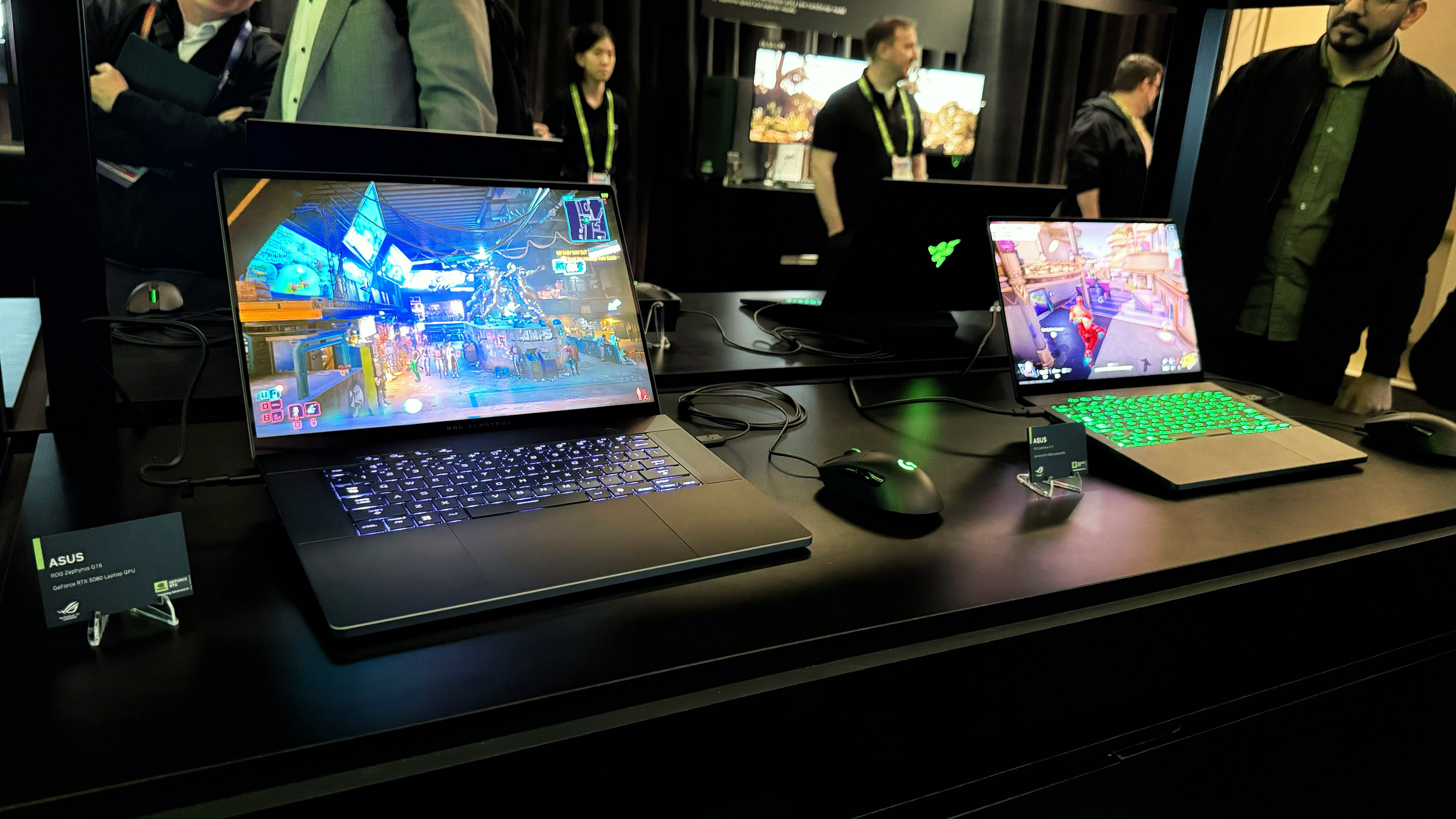
It's finally time for us to find out if the Nvidia "Blackwell" GPU hype is real.
Nvidia launched the newest generation of gaming graphics cards, codenamed "Blackwell" after mathematician David Harold Blackwell, at CES 2025 in Las Vegas last week. Nvidia has made plenty of claims about the "Blackwell" 50-series GPUs when it comes to power and performance, not the least of which is the argument that the RTX 5070 can get similar performance to the RTX 4090.
Between the impressive gaming claims and the fact that the Nvidia GeForce RTX 50-series GPUs are built for AI and gaming workloads, we can't help but ask: is "Blackwell" worth the investment?
Nvidia RTX 5090 gaming performance
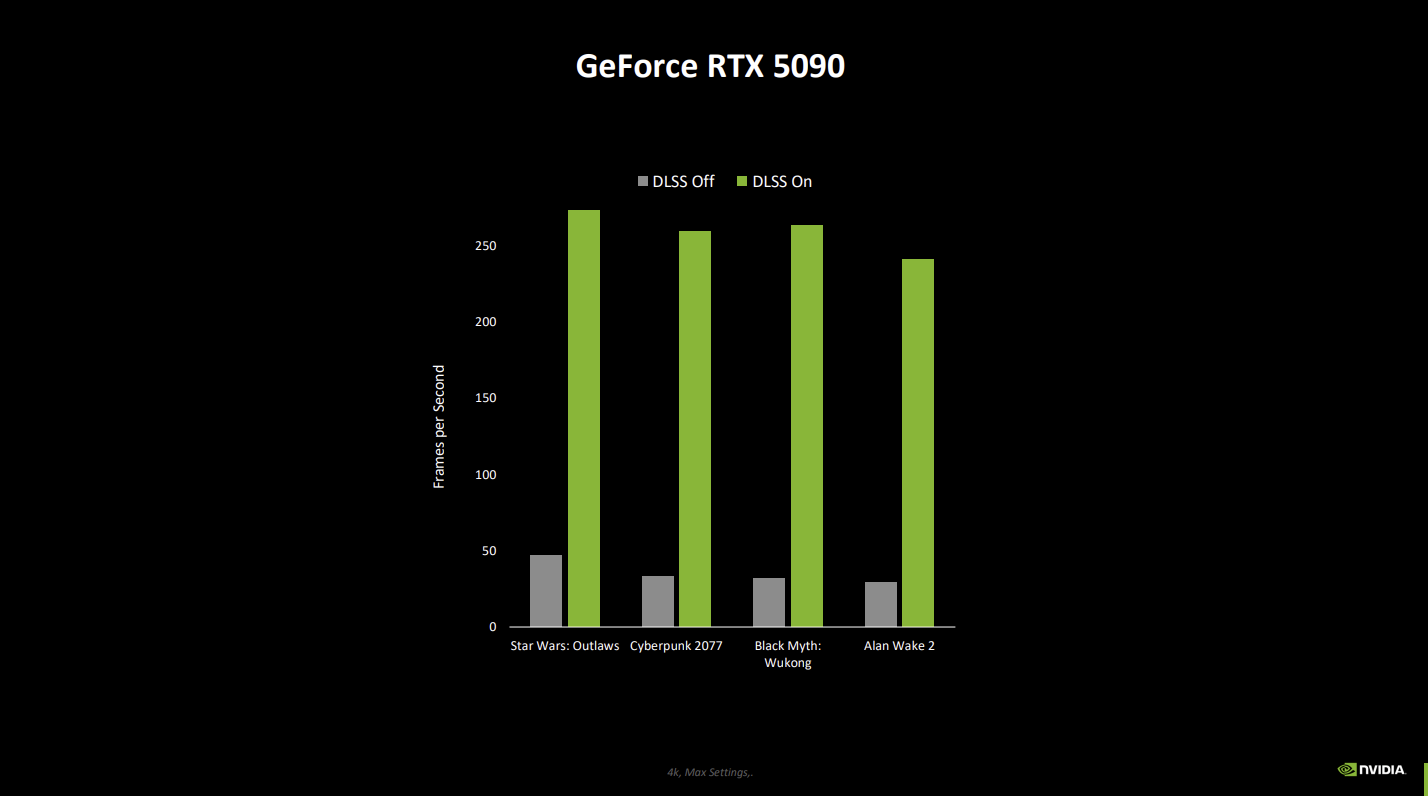
During the Nvidia Editor's Day at CES, the company gave attendees an early look at the architecture changes, AI optimizations, and performance expectations of the RTX 50-series GPUs.
When it comes to pure gaming power, the RTX 5090 flagship GPU still can't quite gaming at 4K on Max graphics presets. On Star Wars: Outlaws, Cyberpunk 2077, Black Myth: Wukong, and Alan Wake 2 the 5090 still can't break that 60 fps (frames per second) gaming threshold for playability. Granted, you can get away with playing these games at 30 fps, but in any game with gunfights, you'll want to opt for higher framerates whenever possible.
That's where DLSS 4 comes in. With the latest iteration of Nvidia's frame generation technology, you'll be able to game in 4K with frame rates over 200 fps. Of course, you're relying on software performance to generate all of those additional frames rather than pure silicon, and not all games offer DLSS 4 support.
You can also lose visual fidelity with frame-gen software like DLSS, as it upscales a lower-resolution image using AI. So you're playing the game at a lower resolution like 1440p, but the GPU's AI pipeline makes it appear like you're playing in 4K. For that reason, plenty of gamers won't use frame-generation software like Nvidia's DLSS, AMD's Fluid Motion Frames, or Intel's XeSS.
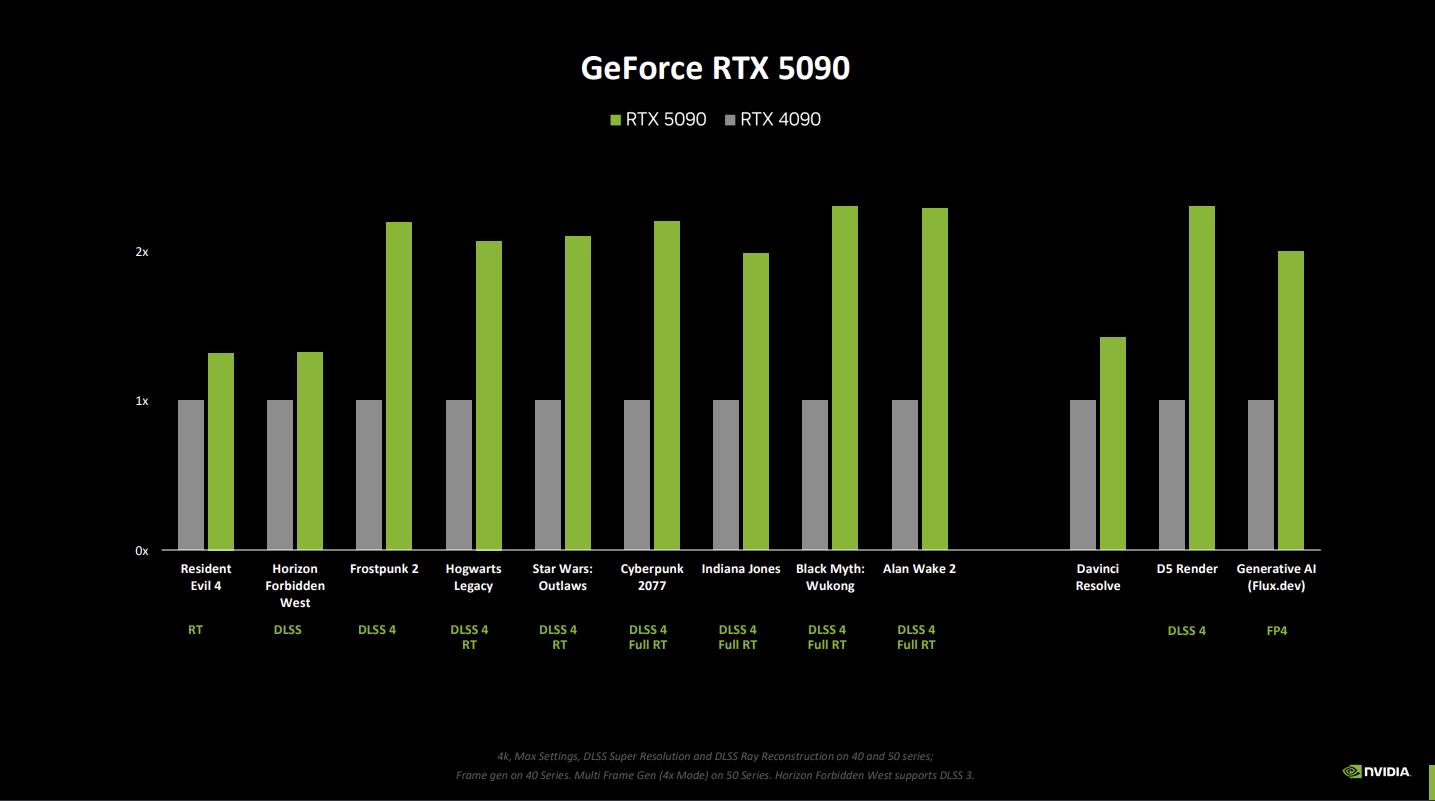
In fact, the 5090 is only about 10% better than the RTX 4090 when it comes to pure silicon performance.
While this information is technically about the RTX 5090 desktop GPU, it is still relevant for gamers on the laptop side, because it helps explain why you don't see gaming laptops with 4K displays anymore. We're still too far off the mark for 4K gaming to be viable.
Nvidia RTX 5080 Laptop GPU performance
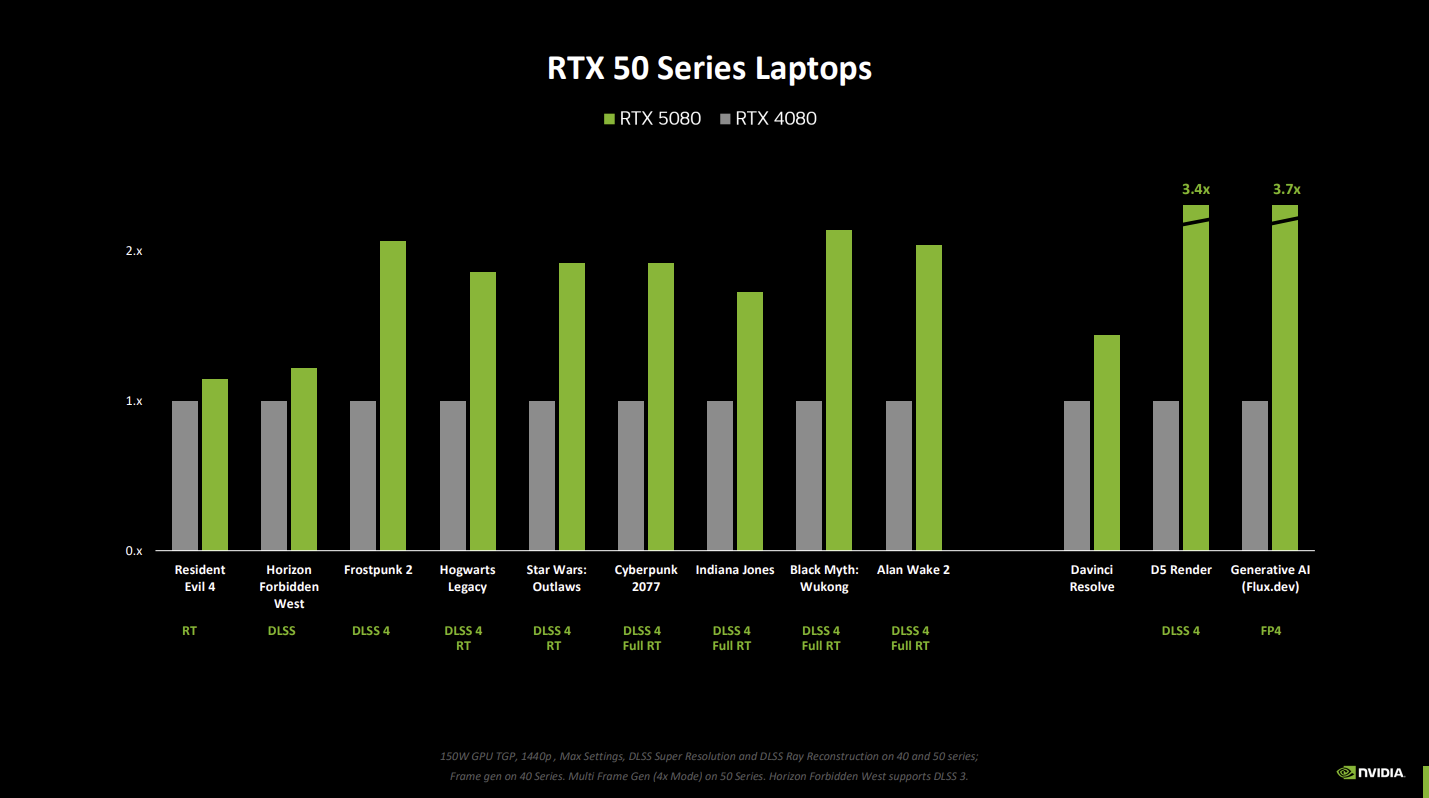
Nvidia did also share information about the performance expectations of the RTX 5080 Laptop GPU which will have 16GB of VRAM onboard.
As you'll notice from the chart, with RT and DLSS 4 enabled, the RTX 5080 can offer almost twice the gaming performance of the RTX 4080. But on gaming titles and workloads that don't offer DLSS 4 and RT, the performance of the 5080 is just 10-30% better than the RTX 4080.
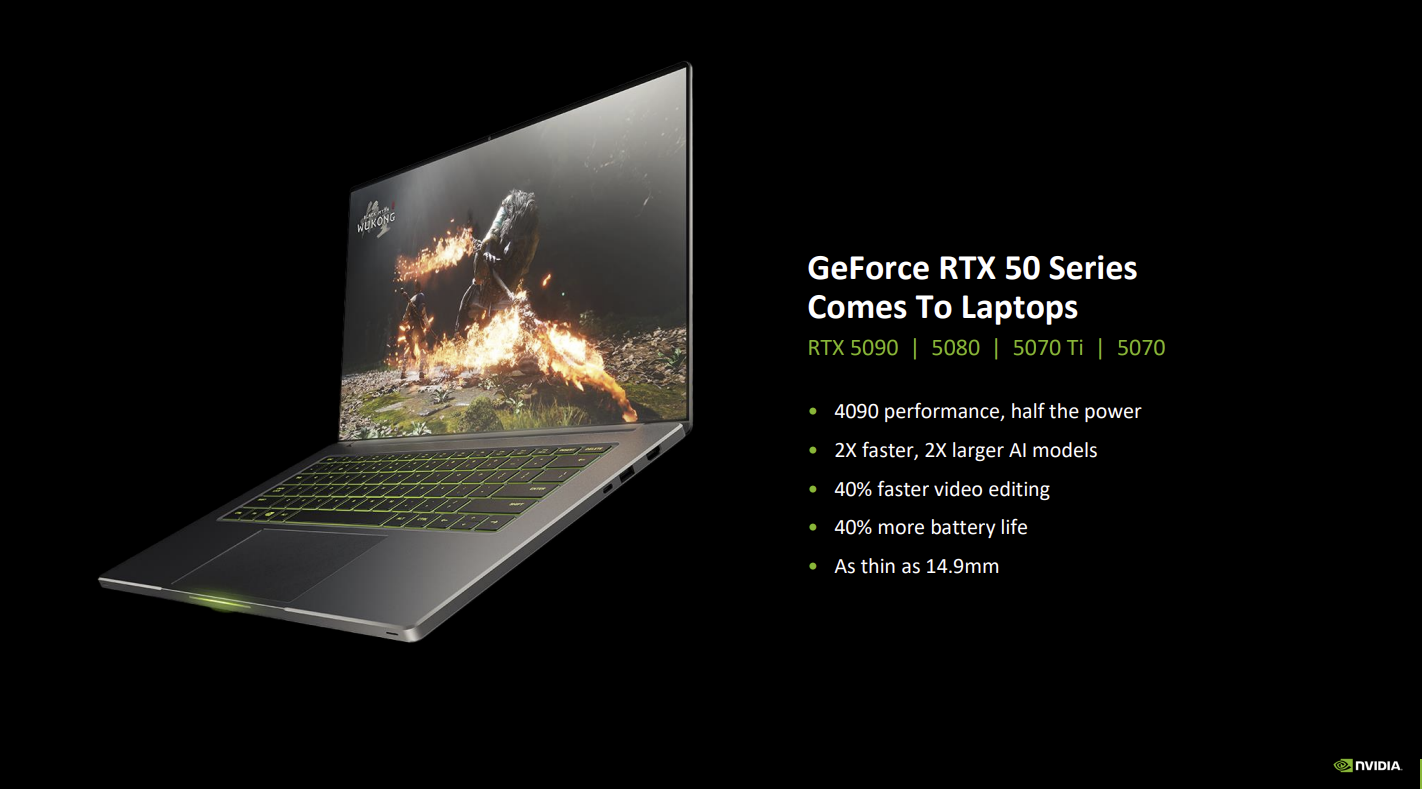
Nvidia has also leveraged the AI features of it's new GPUs for better power efficiency on gaming, offering up to 40% longer gaming sessions on battery power, and up to 30% longer web and video surfing on battery with the optimized BatteryBoost system.
The new battery AI can save power during low scene motion, marginal pixel changes, and minimal player interaction scenarios. It can also optimize your display refresh rate and offer faster PCIe, SSD, memory, and IO power states to get you the most battery out of your system as possible.
Laptops with the new RTX 50-series cards will be available starting in March.
Nvidia RTX 50-series gaming AI
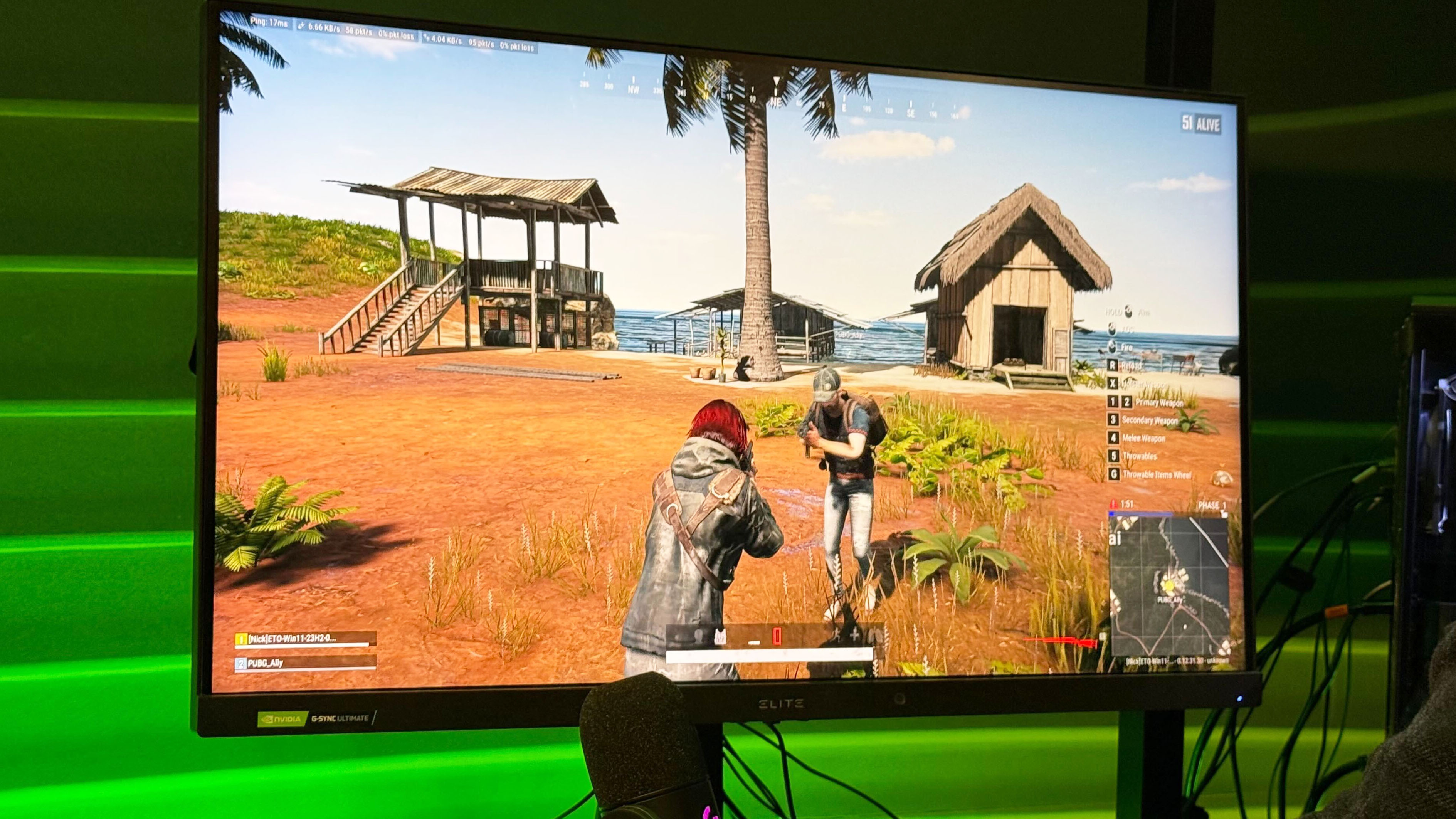
Nvidia's "Blackwell" GPUs are built for AI. The cards have an AI controller that can help with frame generation, which makes DLSS 4 smoother than previous iterations. The GPUs are also built with both gaming and AI workload pipelines.
While most gamers probably don't want to use their GPU for generative AI tasks most of the time, Nvidia is dedicated to bringing AI to the gaming sphere with additional advancements in gaming AI.
Nvidia showcased AI for gaming with new integrations of InWorld's Ace platform. We've seen Nvidia Ace used for controlling NPC dialogue in various tech demos before, but at CES 2025 the company showcased multiple additional iterations of the AI software.
Nvidia was demoing Ace as an AI companion in your Player Unkown's Battle Grounds matches as the PUBG Ally. While the PUBG Ally can join your matches, it doesn't function as an AIM-bot and play for you, but it is a virtual companion that can offer advice and give you gameplay tips on the fly. However, because PUGB Ally exists in the game with you as a digital avatar, it does still feel like a cheat because you can use the PUBG Ally to pick up items and hand them to you, which can give you advantages over other players.
The PUBG Ally iteration of Nvidia Ace is not expected to ship as an official part of PUBG, as it runs entirely on the client side.
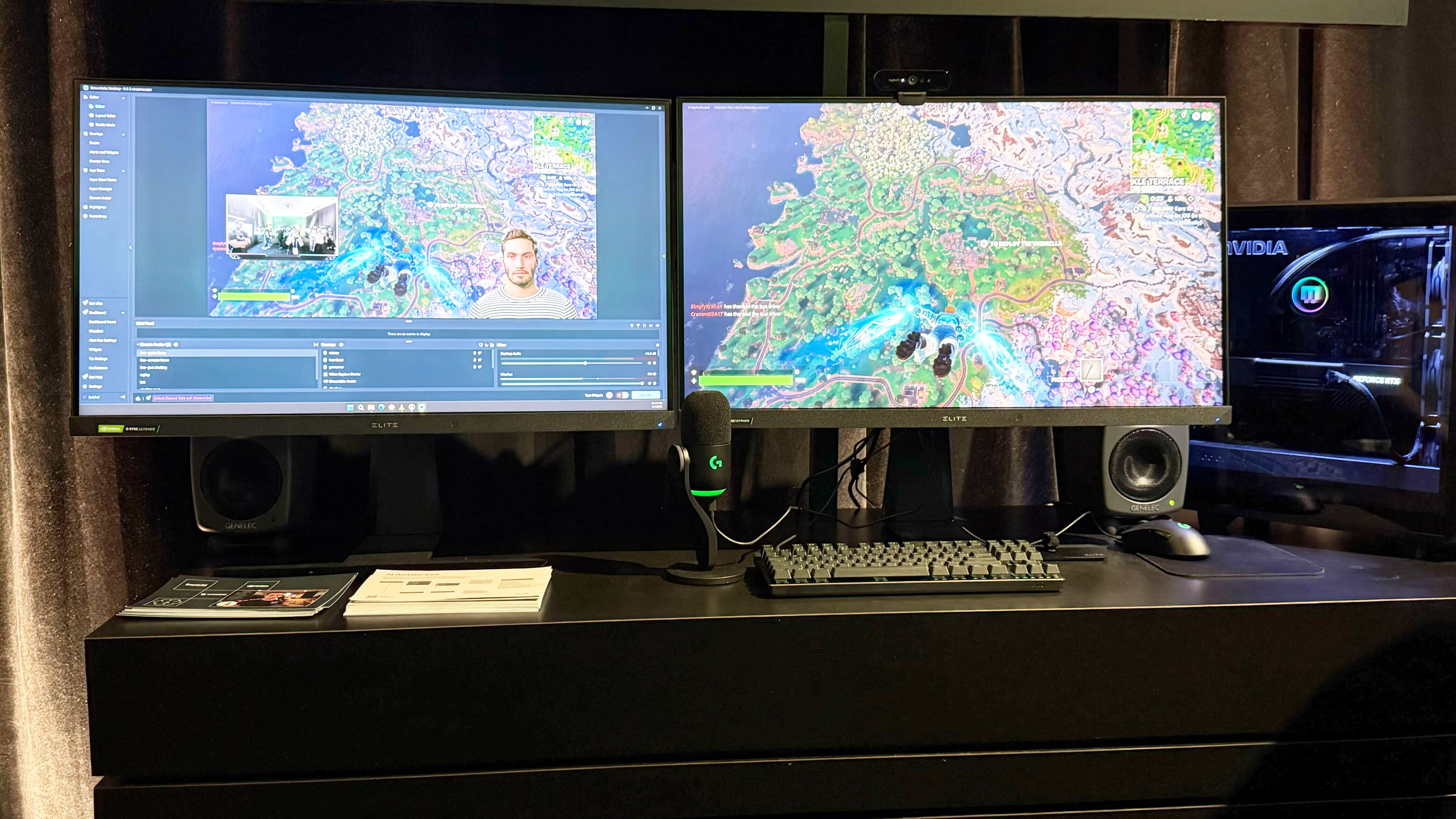
Nvidia was also demoing Ace as a streaming companion as part of a collaboration with StreamLabs, giving you an assistant for your livestream that can control your camera, put together highlights, and adjust your stream feeds. The Ace Streaming Companion does not have an expected launch window, but the Streamlabs Intelligent Streaming Assistant will be coming soon.
Nvidia is bringing Ace to the game inZOI, allowing you to have better control of your Smart Zois. This will run on the client side but is expected to be a featured part of inZOI when it launches on March 28, 2025. Lastly, Nvidia is using Ace to create AI raid bosses for Mir5, which will alternate strategies to provide additional challenges to players.
Because raids aren't difficult enough without AI.
Outlook
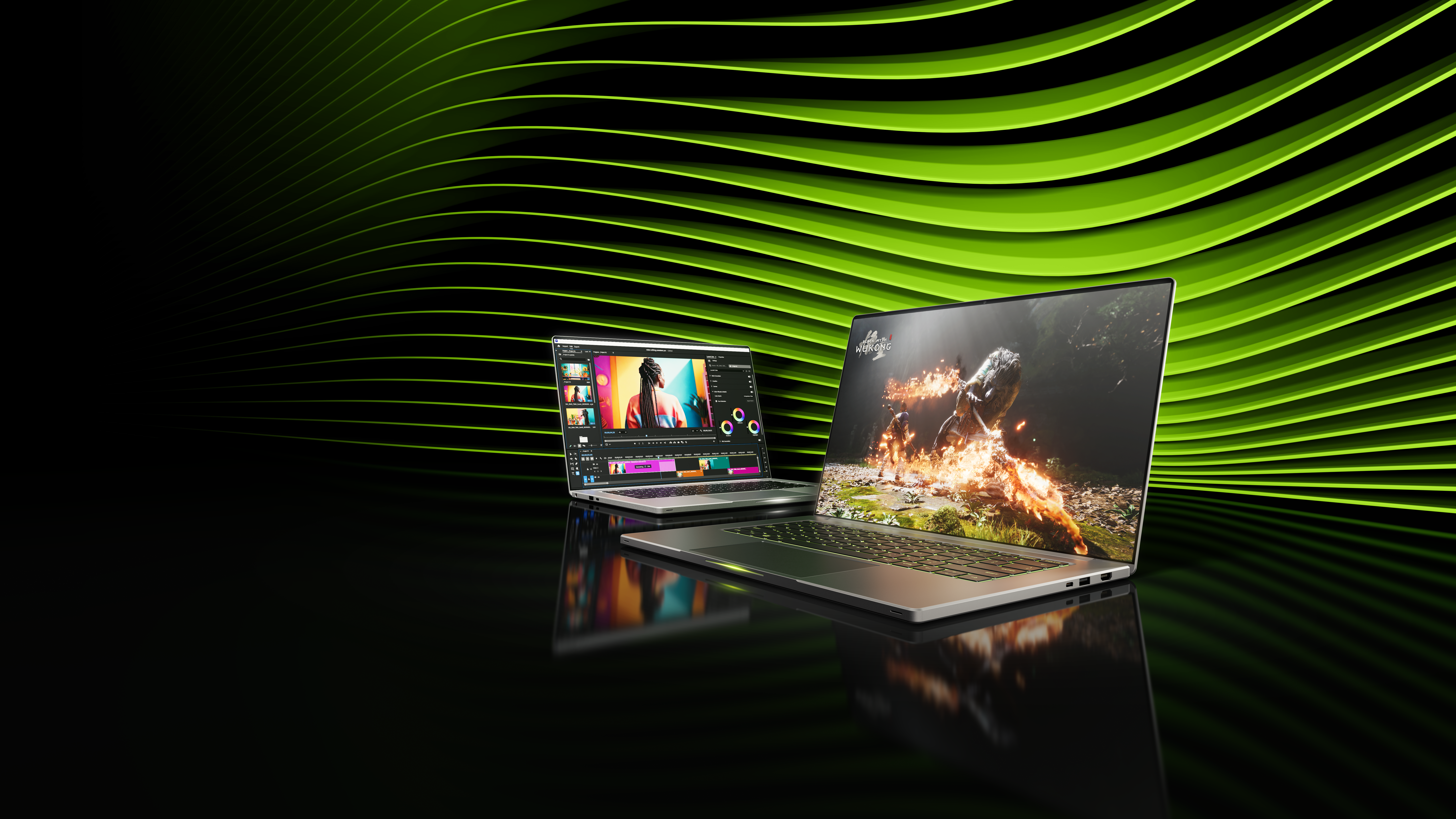
The RTX 50-series GPUs are built for AI, and also for gaming. But if you're a pure hardware performance gamer who wants to play games at max settings natively at 4K, the RTX 50-series is something of a disappointment.
While you can game in 4K at lower graphics presets, or with better optimized titles, the RTX 5090 is still not capable of making 4K gaming viable for the competitive player. Additionally, because these cards are as well designed for AI as they are for gaming, the prices of the RTX 50-series are incredibly high. The cards also require a large amount of power and thermal management, which doesn't say great things for your electric bill.
The RTX 50-series does have at least 10% pure silicon performance upgrades generation to generation, which is nothing to sneeze at. However, if you were hoping for this latest generation of Nvidia GPUs to suddenly make 4K gaming competitive, make 8K single-player gaming a possibility, or lower the cost of gaming with a discrete GPU, the results fall flat.







